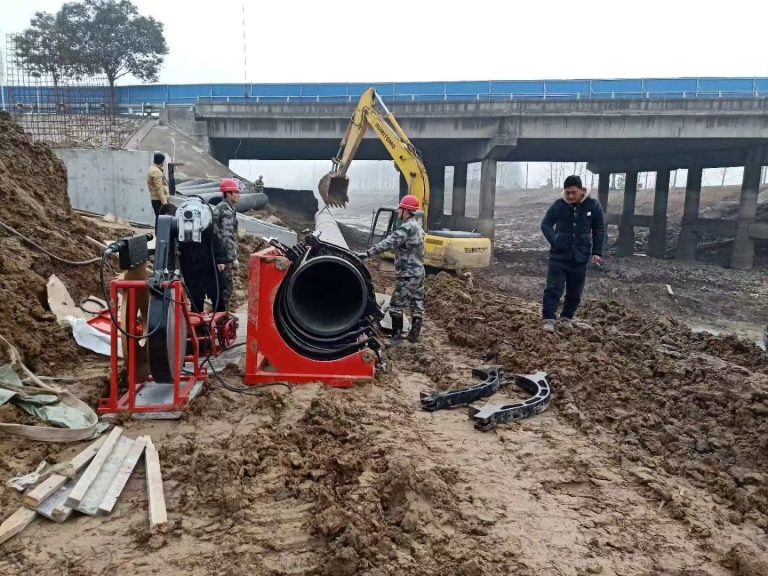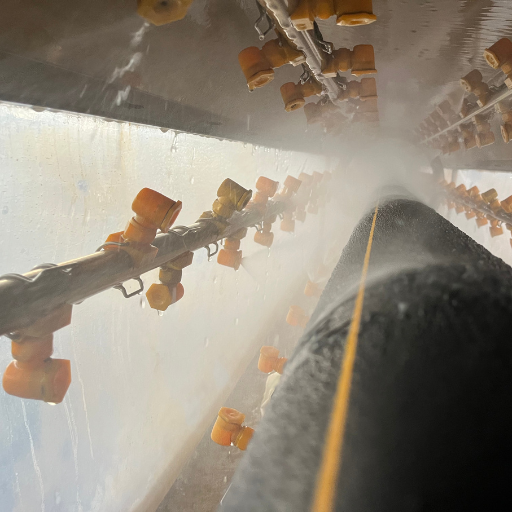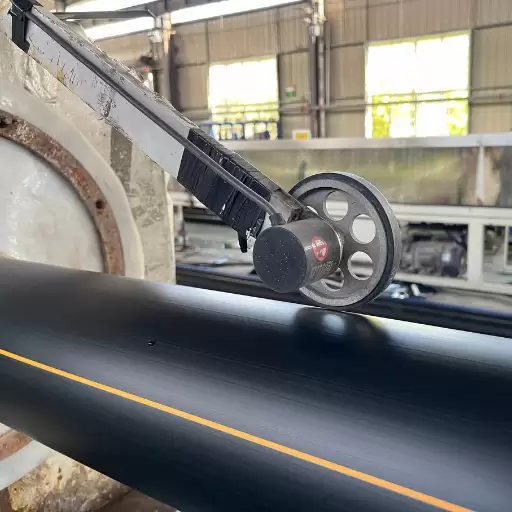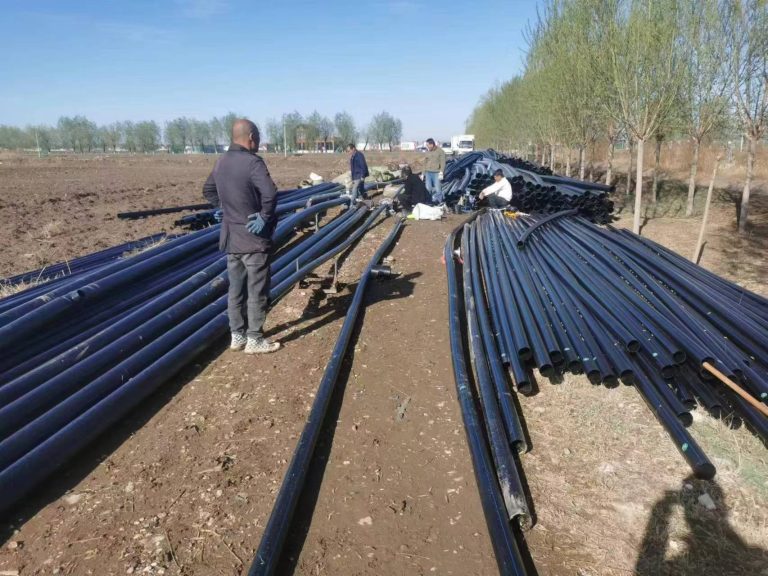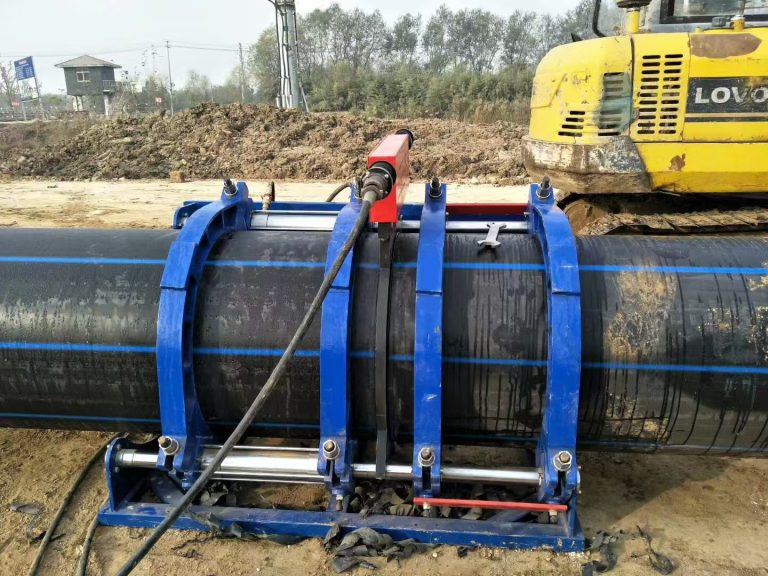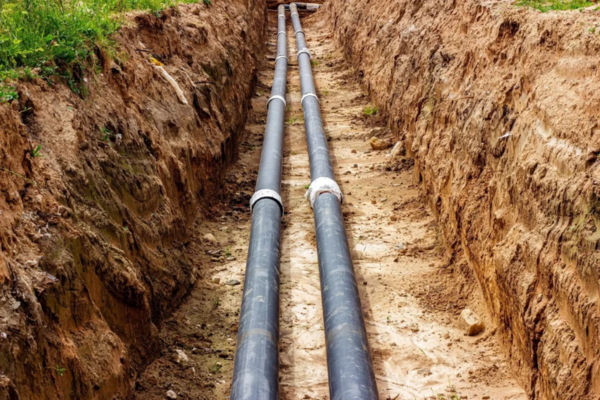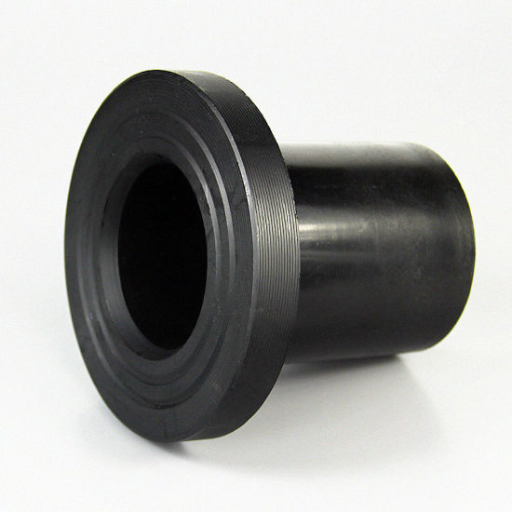HDPE Gas Pipe
Key Features of HDPE Gas Pipe
- Non-Toxic: The HDPE material is safe and odorless.
- Low Flow Resistance: HDPE pipes offer a smooth inner wall that facilitates easy pipeline transportation as opposed to steel or glass-reinforced pipes due to the low roughness they have towards delivering 30% more per unit area of their internal surface than similar bore sizes in terms of this parameter.
- Leak-Free: In addition, municipalities have experienced installations that exceed the strength of the pipe itself by butt fusion, socket fusion, and electrofusion joining methods for HDPE pipes.
- Exceptional Flexibility: Small-diameter HDPE pipes can coil, while larger ones can bend slightly for better handling on construction sites.
- Scratch-Resistant: This also indicates that HDPE pipes have four times greater wear resistance compared to steel, which makes them last longer and is more cost-effective.
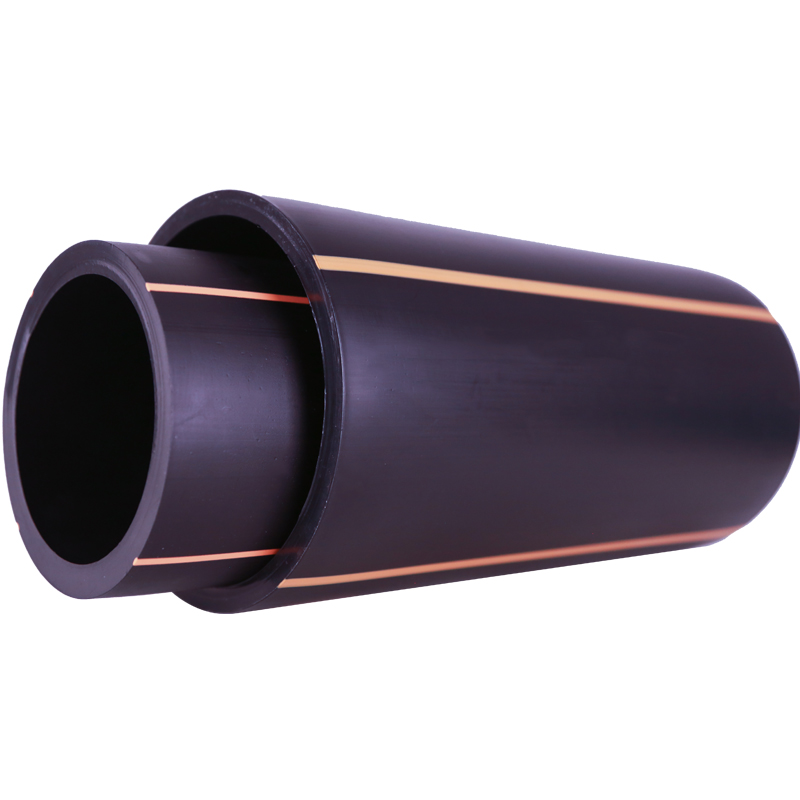
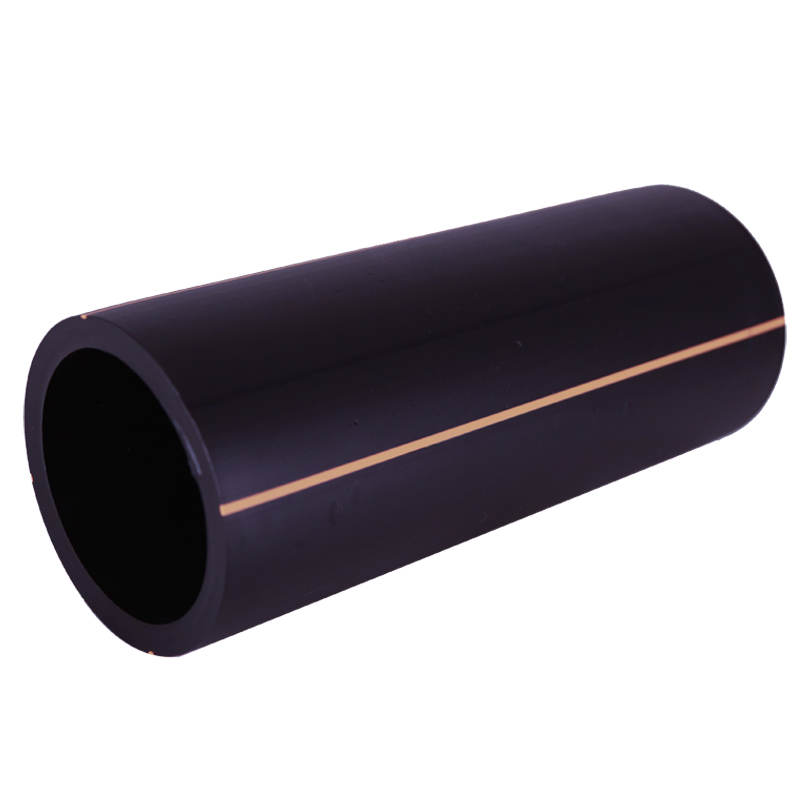
- Construction Convenience: Consequently, PE pipes have become widespread, and trenchless techniques are used for fast and easy construction and installation.
- Longevity: It is designed with certain pressure and temperature parameters during its service life, which is a minimum of fifty years.
- Reduced Operational Costs: Moreover, these pipelines can be installed much easier compared to other metallic ones, thereby reducing labor costs as well as improving work performance significantly.
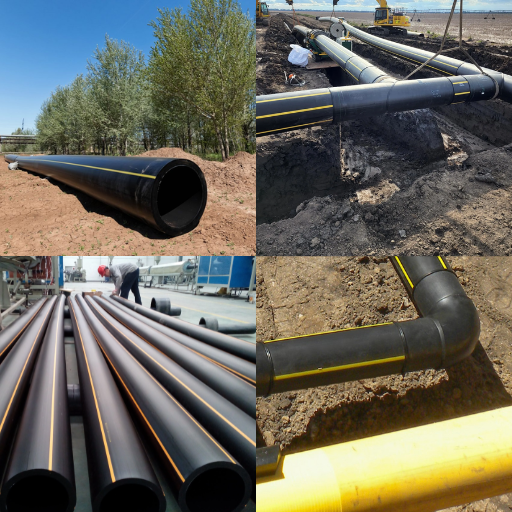
Applications of High-Density HDPE Gas Pipe
It was a good idea to use HDPE gas pipes on gas conveyance systems that have a maximum working pressure of 0.7 MPA and operating temperature ranging from -20℃ to -40℃ with them extensively used in industrial and agricultural setups, as well as being deployed in the transport, distribution, and metering of gas.
Key advantages of HDPE gas conduits include high corrosion and abrasion resistance, excellent flexibility, and lower weight compared to materials such as steel or concrete, hence resulting in easy shipping, installation, and maintenance.
Furthermore, these pipes have smooth inner surfaces that allow for efficient gas flow at minimal pressure drops. They are also resistant to chemicals in the soil and can be used during rough weather without cracking.
They are preferred because they are commonly found within residential areas, linking homes with the major distribution pipelines, but they can still be used for big projects such as long-distance natural gas pipelines.
Specification For Gas Hdpe Pipe
| Nominal Outer Diameter | Minimum Wall Thickness | |||
|---|---|---|---|---|
| SDR 11* | SDR 17* | SDR 21* | SDR 26* | |
| 32 | 3 | 3 | ||
| 40 | 3.7 | 3 | ||
| 50 | 4.6 | 3 | 3 | |
| 63 | 5.8 | 3.8 | 3 | |
| 75 | 6.8 | 4.5 | 3.6 | 3 |
| 90 | 8.2 | 5.4 | 4.3 | 3.5 |
| 110 | 10 | 6.6 | 5.3 | 4.2 |
| 125 | 11.4 | 7.4 | 6 | 4.8 |
| 140 | 12.7 | 8.3 | 6.7 | 5.4 |
| 160 | 14.6 | 9.5 | 7.7 | 6.2 |
| 180 | 16.4 | 10.7 | 8.5 | 6.9 |
| 200 | 18.2 | 11.9 | 9.6 | 7.7 |
| 225 | 20.5 | 13.4 | 10.8 | 8.6 |
| 250 | 22.7 | 14.8 | 11.9 | 9.6 |
| 280 | 25.4 | 16.6 | 13.4 | 10.7 |
| 315 | 28.6 | 18.7 | 15.0 | 12.1 |
| 355 | 32.2 | 21.1 | 16.9 | 13.6 |
| 400 | 36.4 | 23.7 | 19.1 | 15.3 |
| 450 | 40.9 | 26.7 | 21.5 | 17.2 |
| 500 | 45.5 | 29.7 | 23.9 | 19.1 |
| 560 | 50.9 | 33.2 | 26.7 | 21.4 |
| 630 | 57.3 | 37.4 | 30.0 | 24.1 |
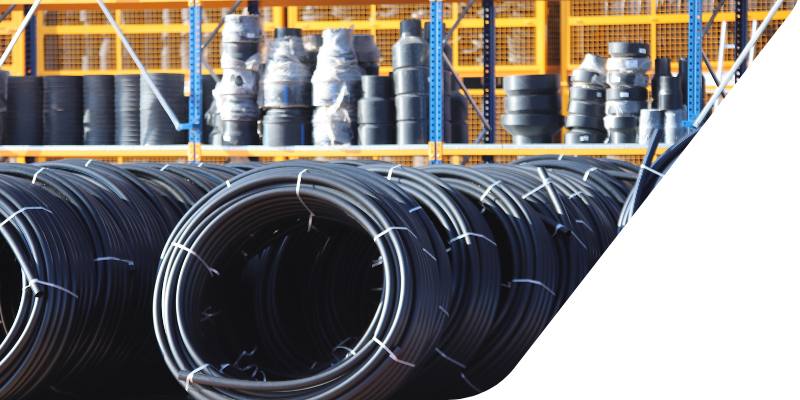
Safety, efficiency, and cost-effectiveness are crucial in the world of natural gas distribution, and hence, it is essential to choose suitable materials. A significant choice that has emerged for gas pipelines is HDPE, known for its strength and resistance against various environmental factors. The economic benefits, ease of installation, and long-term performance of HDPE gas pipes will be discussed in this article. By understanding the most vital features of HDPE, people can know why many gas utility firms and builders now use this product.
Properties of HDPE Gas Pipes and Parameters
| Characteristics | Requirements |
|---|---|
| Longitudinal Reversion,%,(110℃) | <=3 |
| Oxidation Induction Time,min,(200℃) | >=20 |
| Extension Rate at Break,% | >=350 |
| Carbon Black Con tent(mass fraction),%(only applies to black mixed ingredients) | 2.0~2.5 |
| Melt Mass Flow Rate,g/10min(195℃,5kg) | Change of MFR by processing±20 % |
| Longitudinal Reversion Rate, h(80℃,2Mpa) | ≥20 |
| Hydrostatic Strength | |
| 1)20℃,Hoop Stress: PE10012.4Mpa,PE809.0Mpa,100h | No Failure |
| 2)80℃,Hoop Stress:PE1005.4Mpa,PE804.5Mpa,165h | No Failure |
| 3)80℃,Hoop Stress: PE1005.0Mpa,PE80,4.0Mpa,1000h | No Failure |
HDPE Gas Pipe Catalog
Pipeline Related Articles

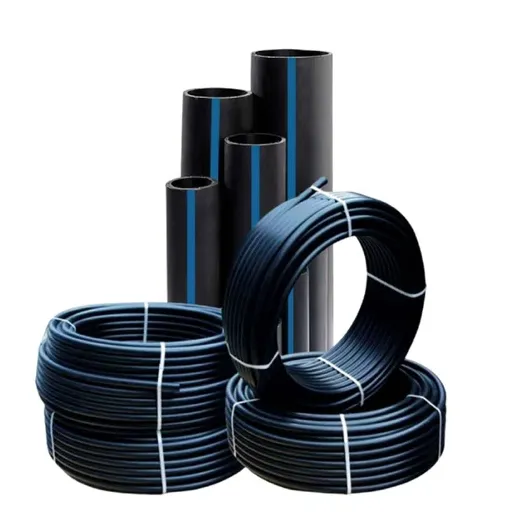
The Question
Common FAQ
Discover detailed insights on HDPE Gas Pipes. Feel free to contact us with any questions.
Q: What is an HDPE gas pipeline, and why is it cost-effective for natural gas distribution?
A: An HDPE (High-Density Polyethylene) Gas Pipe is a type of pipe made from high-density polyethylene known for its durability and cost-effectiveness. It’s a popular choice for natural gas distribution due to its resistance to corrosion, flexibility, and long lifespan, making it more economical than traditional metal pipes.
Q: How is HDPE Gas Pipe different from MDPE Gas Pipe?
A: HDPE Gas Pipe differs from MDPE (Medium Density Polyethylene) Gas Pipe primarily in density and strength. HDPE has a higher density and is more durable, making it suitable for higher-pressure applications. Like yellow MDPE or MDPE gas pipe, MDPE is often used for lower-pressure systems.
Q: Why was the HDPE gas pipe chosen over the metal pipe for natural gas distribution?
A: HDPE Gas Pipe is preferred over metal pipe because it is resistant to corrosion, light in weight, has high tensile strength, and can withstand environmental stress. These characteristics and its cost-effectiveness make HDPE materials a superior choice for natural gas distribution.
Q: What standards and certifications should HDPE Gas Pipe comply with?
A: When selecting an HDPE Gas Pipe, it should comply with standards such as ISO 4437, NZS 4130, and ASTM D2513. These certifications ensure that the pipe meets the requirements for safety and performance in gas distribution.
Q: Can HDPE Gas Pipe be used for natural and propane gas distribution?
A: Yes, HDPE Gas Pipe is suitable for natural and propane gas distribution. It is designed to handle various types of gases, including propane and LPG (liquefied petroleum gas), making it a versatile material.
Q: What are the installation methods for HDPE Gas Pipes?
A: HDPE Gas Pipes can be installed using various methods, including mechanical fittings, fusion fittings (such as electro-fusion), and butt fusion. Each method ensures a secure, leak-free connection, which is essential for the safe distribution of natural gas.
Q: Are there any popular brands for HDPE Gas Pipe?
A: Several popular brands manufacture HDPE Gas Pipes, and their pipes are selected for comparison based on reliability and quality. When choosing a brand, it’s essential to consider factors like compliance with standards and the product’s performance history.
Q: How does the slow crack growth resistance of HDPE Gas Pipe benefit its usage?
A: HDPE gas pipe’s slow crack growth resistance enhances its longevity and reliability under stress, reducing the likelihood of cracks and leaks over time. This resistance is crucial in maintaining the integrity of the gas distribution network.
Q: How can I manage my account or order HDPE Gas Pipes?
A: To manage your account or place an order for HDPE Gas Pipes, you can follow the quick links provided on the supplier’s website. Most suppliers also offer customer service support via their warehouse address or phone hours listed on their site. For specific inquiries, please contact us directly using the provided contact methods.

